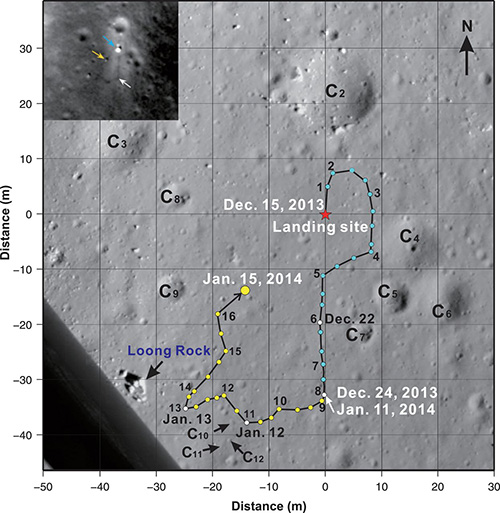The latest result from the lunar exploration project “Chang E III” was published on Science, one of the internationally top-ranked journals in the field, on March 13th, 2015. The “Chang E III” project has been collaborated by China University of Geosciences (Wuhan), Macau University of Science and Technology (MUST), the Institute of Electronics, Chinese Academy of Sciences, and National Astronomical Observatories, Chinese Academy of Sciences. It’s been the third time that MUST has a significant publication on the top international journals.
Early on Dec 15th, 2013, the “Chang-e III” lander carrying “Rabbit” rover successfully landed in the “Imbrium” area of the moon. On the lander there were landing camera, topography camera, lunar-based telescopes and the EUV camera, and on “Rabbit” rover a panorama camera, a moon radar, an infrared imaging spectrometer and a particle-stimulated X-ray spectrometer were installed. The mission of the “Rabbit” rover is to realize a series of scientific objectives such as to collect typographical data along the path, composition data of the lunar soil, and data from the moon radar, to complete the survey on the topography and geological structure as well as material composition of the lunar surface, and to detect subsurface geological structure, etc.
Based on the data collected from the landing camera, panorama camera, moon radar, and combining interpretations of the past lunar images and spectral data from artificial satellites orbiting the moon, this paper reveals for the first time the typography and geological structure in the northern Imbrium of the moon. This paper is scientifically significant in that it points out the necessity to consider about the volcanic and thermal evolution of the moon due to the complexity of the volcanic events, impact reconstruction and space weathering that the Imbrium area has experienced.
It is reported that this is the first time for the “Chang E” lunar exploration project team to publish their papers on the top international journal. This breakthrough indicates that our country has achieved a high level in loading research, project implementation, data processing and lunar science research, etc.
Scholars at the MUST Space Science Institute are devoted to the on-going in-depth analysis of other data collected from “Chang E III” lander and aspiring to produce more high-quality research outcomes. It is our hope that the relevant research results can play an important role in the future scientific and technological development of Macao.

The landing sites of “Chang E III” and route map of “Rabbit”





